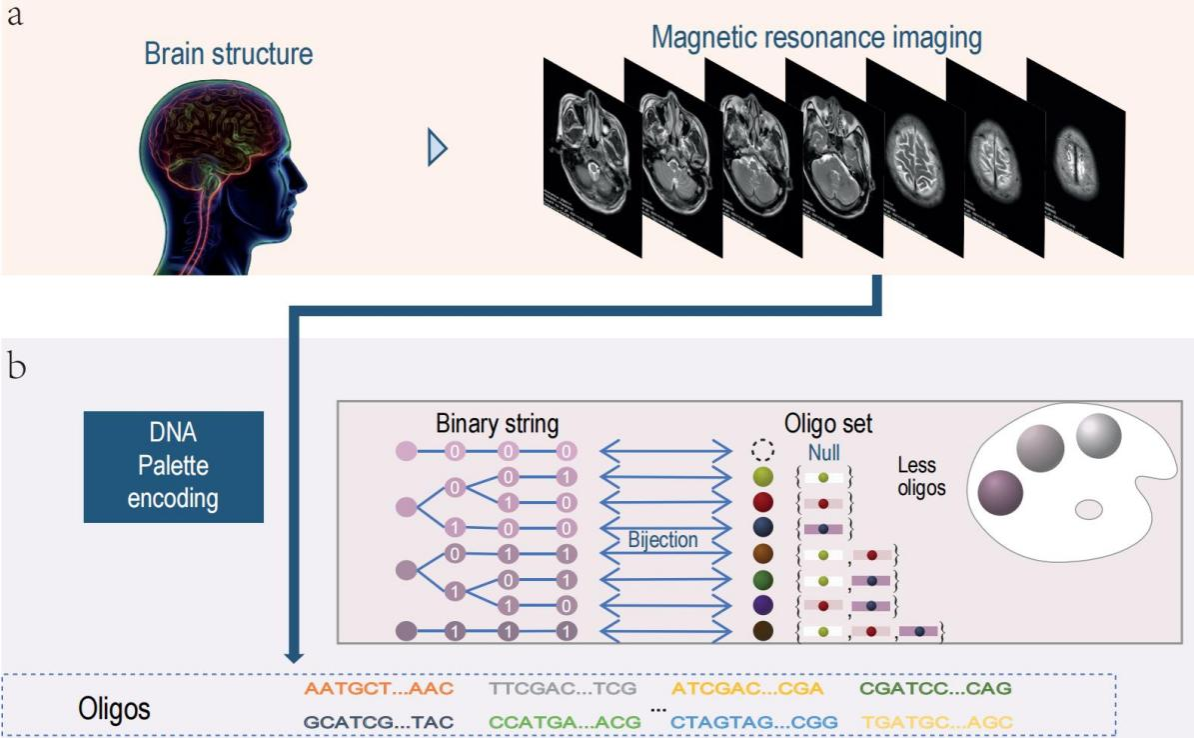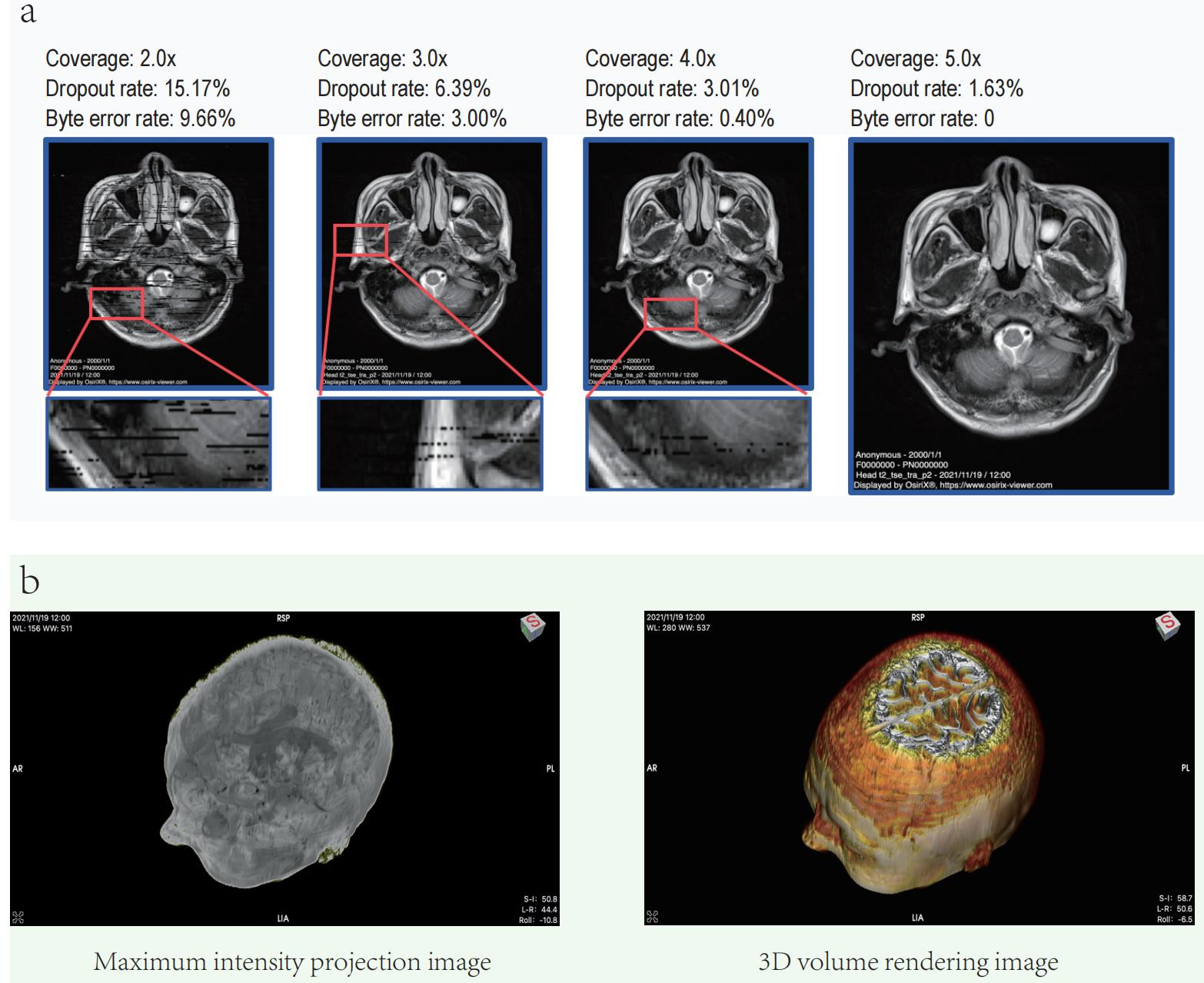Tianjin University's Frontiers Science Center for Synthetic Biology, in collaboration with Tianjin Huanhu Hospital, has achieved a major breakthrough in DNA-based data storage by introducing an innovative coding scheme called "DNA Palette." The new method enables the successful encoding of brain MRI data into DNA, followed by lossless decoding and 3D reconstruction of the imaging data, paving the way for advanced medical data storage technologies. The study has been published in National Science Review.

Overview of the DNA Palette encoding scheme: (a) Raw data: Brain MRI data. (b) Illustration of the DNA Palette encoding process: The DNA Palette code establishes a bijection between binary sequences and sets of oligos).
Brain MRI is a crucial tool in clinical diagnosis, surgical planning, and treatment evaluation. However, the vast amounts of data generated during MRI scans pose significant challenges for long-term storage. This issue is especially critical for diseases such as juvenile Parkinson, epilepsy, and neurogenetic disorders, where lifelong data accumulation and analysis are essential. Current storage media struggle to meet the high demands for such large-scale, long-term data retention.

Experimental performance: (a) Reconstructed image pixel data at different sequencing coverage rates. (b) Maximum intensity projection image and 3D volume rendering image generated from the decoded data.
DNA, known for its exceptional stability and storage density, has emerged as a promising medium for data storage. The research team at Tianjin University successfully encoded 11.28 megabytes of brain MRI data into approximately 250,000 DNA sequences, achieving an impressive data density of 2.39 bits per base. The DNA Palette is specifically designed to accommodate the unique characteristics of MRI data, featuring high net information density, broad applicability, and data recovery capabilities at low sequencing coverage.
The encoded oligos are stored in dry powder form, weighing only 3 micrograms, which supports over 300 reads under current technical standards. This breakthrough demonstrates the potential of DNA as a long-term, efficient, and secure storage medium for medical data.
This research marks a crucial step toward the practical application of DNA data storage, offering a new technical pathway for securely storing large amounts of medical data and accelerating the broader adoption of DNA-based storage technologies.
By: Qin Mian






